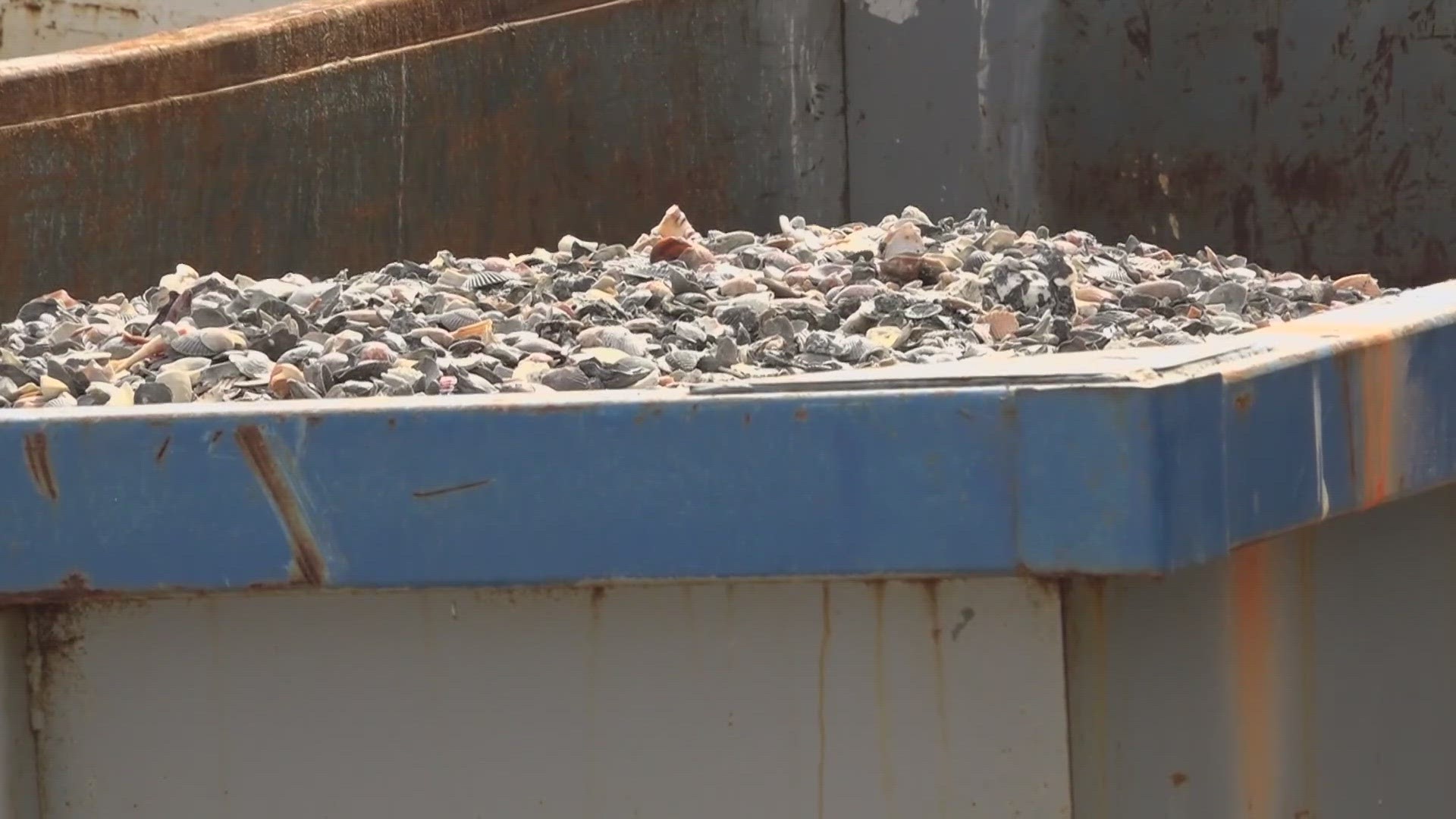ST. JOHNS COUNTY, Fla — Earlier this week, we showed you thousands of shells in dumpsters in Vilano Beach.
Some residents alerted us that they had found many of those shells still had living animals in them.
Those shells are from the beach restoration project going on in Vilano, and marine biologists are raising concerns.
Ed McGinley is a biology professor at Flagler College. When he saw First Coast News' story earlier in the week about dumpsters full of shells—some of them with living animals still inside -- he said he was "devastated. It made me want to cry."
According to the U.S. Army Corps of Engineers, those shells are from the Vilano Beach restoration project.
For this project, there is a dredger seven miles offshore sucking up sand. That sand is piped onto Vilano Beach. McGinley said, dredgers also vacuum whatever else is on the floor, such as living creatures in their shells.
A St. Johns County official says the project's permit does not allow anything bigger than ¾ of an inch to be placed on the beach during beach renourishment. That's to keep items such as metal and glass out of the newly-placed sand.
However, it also means shells and their animals are sifted out as well. Those sifted-materials have been placed in dumpsters in a Vilano Beach parking lot.
Michelle Roberts is the Chief of Corporate Communications for the U.S. Army Corps of Engineers-Jacksonville District. She wrote First Coast News, "The majority of the shells that go through the dredge and get filtered into the dumpsters are empty shells that are buried in the offshore borrow area. During the screening process we look to remove any live animals found. It is never our intent for them to be placed in the dumpsters."
McGinley just so happens to be studying the ocean floor. He showed First Coast News his video taken off northeast Florida, about 5 miles offshore and 60-feet-deep. The video shows a sunken contraption with a basket full of sardines that will lure seafloor creatures to get in view of the camera while they chew on the sardines.
Pointing at crabs, sea stars, and other seafloor animals in the video, McGinley said, "So we have tons of life."
McGinley said a sandy ocean floor may not look full of life, but it is. He said often those sea stars and shelled animals live on or slightly under the sand.
"There are shelled organisms and snail conchs would be in there," he said.
That’s just what locals said they found in the dumpsters last week. They rooted through some of the dumpsters before the contractor placed no trespassing signs there.
McGinley and many other marine biologists tell First Coast News it's unclear how dredging specifically impacts the ocean floor’s ecology. But they’re concerned. And they're not just concerned about the shells and the invertebrates inside them, but about how removing so many could impact other parts of the food chain.
"We’re disturbing habitat and organisms," McGinley said. "We’re taking an area and turning it potentially into a desert, even if it's for a short amount of time."
"I’d be curious as to why after the material has been sorted, it can’t be redeposited back. Even if it’s not seven miles out or however far out they are," he said.
"We are, in my opinion, needlessly sacrificing organisms to renew our beaches," McGinley noted. "It definitely makes me feel kind of sad and devastated."

